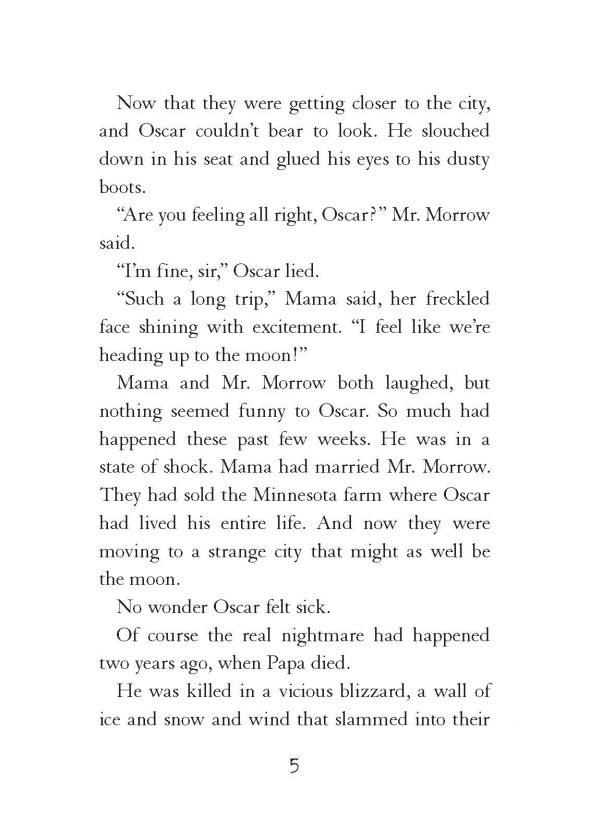 Every day this week, we are taking you behind the scenes of I Survived with author Lauren Tarshis and editor Nancy Mercado as they give you the inside scoop on how the latest book in theNew York Times bestselling series was created.
Every day this week, we are taking you behind the scenes of I Survived with author Lauren Tarshis and editor Nancy Mercado as they give you the inside scoop on how the latest book in theNew York Times bestselling series was created.
PRACTICE MAKES PERFECT by Nancy Mercado
Most people think that being an editor means correcting an author’s grammar and spelling. Of course, an editor can fix grammar and spelling, but that’s mostly a copyeditor’s job. (A copyeditor is the person who reviews the manuscript after an editor.) So what does an editor do? Well, basically we act as the author’s trusted first reader, making sure that the final book is as satisfying as it possibly can be and that it reflects exactly what the author wanted to convey. We look at the pacing of the story, or the speed at which the action moves along. (Does the story drag in parts? Or does it go so quickly at times that a reader might gloss over what just happened?) We look at the characters. (Are they likable? Are the characters doing and saying things that feel believable?) And finally, we look at the language that the author is using to describe a scene. (Is it clear and fresh and exciting? Will readers be able see this story like it’s a movie in their mind?)
 Being Lauren Tarshis’s trusted first reader is the best because Lauren cares so much about each and every word in her books; she’s not afraid to keep revising until they’re just right. (She actually revises several times before she even shows me the manuscript!) Here’s what the editing process look like on an I Survived book:
Being Lauren Tarshis’s trusted first reader is the best because Lauren cares so much about each and every word in her books; she’s not afraid to keep revising until they’re just right. (She actually revises several times before she even shows me the manuscript!) Here’s what the editing process look like on an I Survived book:
- Lauren sends me her first draft and I print it out. (I don’t like reading on a computer screen so I make my notes on paper.)
- I write a lot of questions and comments in the margins. Sometimes I add a smiley face or two. It’s important that Lauren know how much I like a scene or a line, otherwise she might cut it in the revision process!
- Lauren and I sit down and chat about my notes and she goes back and revises on her own.
- Then we repeat steps 1-3 a few more times. (For I Survived the Great Chicago Fire, 1871, we repeated this back and forth at least four times!)
- Once we are satisfied that the story is more or less ready for more readers, we pass it along to the copyeditor who makes any necessary grammar and spelling corrections. The copyeditor also fact checks all of the research. (For example, on the Chicago Fire book, the copyeditor checked that Lauren had accurately measured how long it would take for Oscar and his family to reach Chicago from Minnesota. Indeed, she had!)
- We send the manuscript along to the designer who lays it out in pages like the ones you see in the final book.
- We look it over 2 more times (often finding errors we missed earlier!), a proofreader takes one last look at it, and then it’s done and off to the printer!
With the Great Chicago Fire story, Lauren and I spent many weeks talking about the main character, Oscar, and his relationship with his mother’s new husband, Mr. Morrow. We knew that Mr. Morrow was going to play a big role in the book, especially towards the end, and that it was crucial that readers liked Mr. Morrow and didn’t think he was a bad guy. But it was also important that readers understood that it was because of Mr. Morrow that they were moving to this new city and how Oscar had mixed feelings about that. There’s one scene in particular in Chapter 2 that Lauren continued to revise and polish over the course of several drafts. The scene is where Oscar and his mother and Mr. Morrow are on a train heading to Chicago for the first time. Here’s how it appeared in the very first draft:
Oscar closed his eyes and pressed his forehead against the window.
“Are you feeling alright, son?” Mr. Morrow said.
Oscar cracked open his eyes, and tried to sit up straight.
“I'm fine, sir.”
“Such a long trip,” Mama said, her freckled face bright with excitement. “I feel like we’re about to land on the moon!”
Mr. Morrow chuckled and gave Mama one of the dreamy looks that Oscar hated.
No wonder Oscar felt sick.
It wasn’t the train or the heat. It was him, Mr. Morrow.
Mama’s new husband.
Oscar’s new . . .
No, he wouldn’t even think it.
Mr. Morrow wasn’t a bad guy. And anyone could see he made Mama happy. Probably Mr. Morrow wanted to make Oscar happy too. Fat chance. It was because of him that Oscar was on this train, that he was moving away from the Minnesota farm where he’d spent his whole life.
Of course this whole nightmare started two years ago, when Papa was killed.
And now here’s the scene as it will appear in the final book:

Do you notice the differences between the two versions? The first change that stands out to me is the first line. Lauren began by writing “Oscar closed his eyes and pressed his forehead against the window.” And then by the time we’d gone through several revisions, that sentence had changed to include so many more details. Oscar is now “slouched down in his seat” and he can’t even bear to look out the window to see the new city he’s about to inhabit. His hesitance about all of the changes happening in his life is much more evident and we have a vivid picture of who Oscar is and how he’s feeling in the final version, don’t you think?
Another big difference is how Oscar describes Mr. Morrow in the first draft as someone that makes him sick. By the final version, what’s troubling Oscar is much more the fact that he’s had to leave behind his family farm, but we get the sense that he is slowly warming up to Mr. Morrow. That seems like a small detail, and it’s only a few lines, but it makes a huge difference in how we perceive Oscar and his relationship with Mr. Morrow (which will definitely have an effect on future scenes later on in the book).
Revision can really change so much, even how you feel about a character! Have you had to revise a piece of your own writing? What was the hardest part?
 About the author:
About the author:
Lauren Tarshis is the editor of Scholastic's Storyworks magazine and group editorial director for language arts for Scholastic classroom magazines, in addition to being the author of the I Survived series and the critically acclaimed novels Emma-Jean Lazarus Fell Out of a Tree and Emma-Jean Lazarus Fell in Love. She lives in Westport, Connecticut, and can be found online at www.laurentarshis.com.
Want to learn more? Watch this video about how Lauren got the idea for the I Survived series and this one about the differences between writing for a magazing and a book.
For additional classroom resources, visit www.scholastic.com/TeachISurvived.
Author photo © David Dreyfuss.



